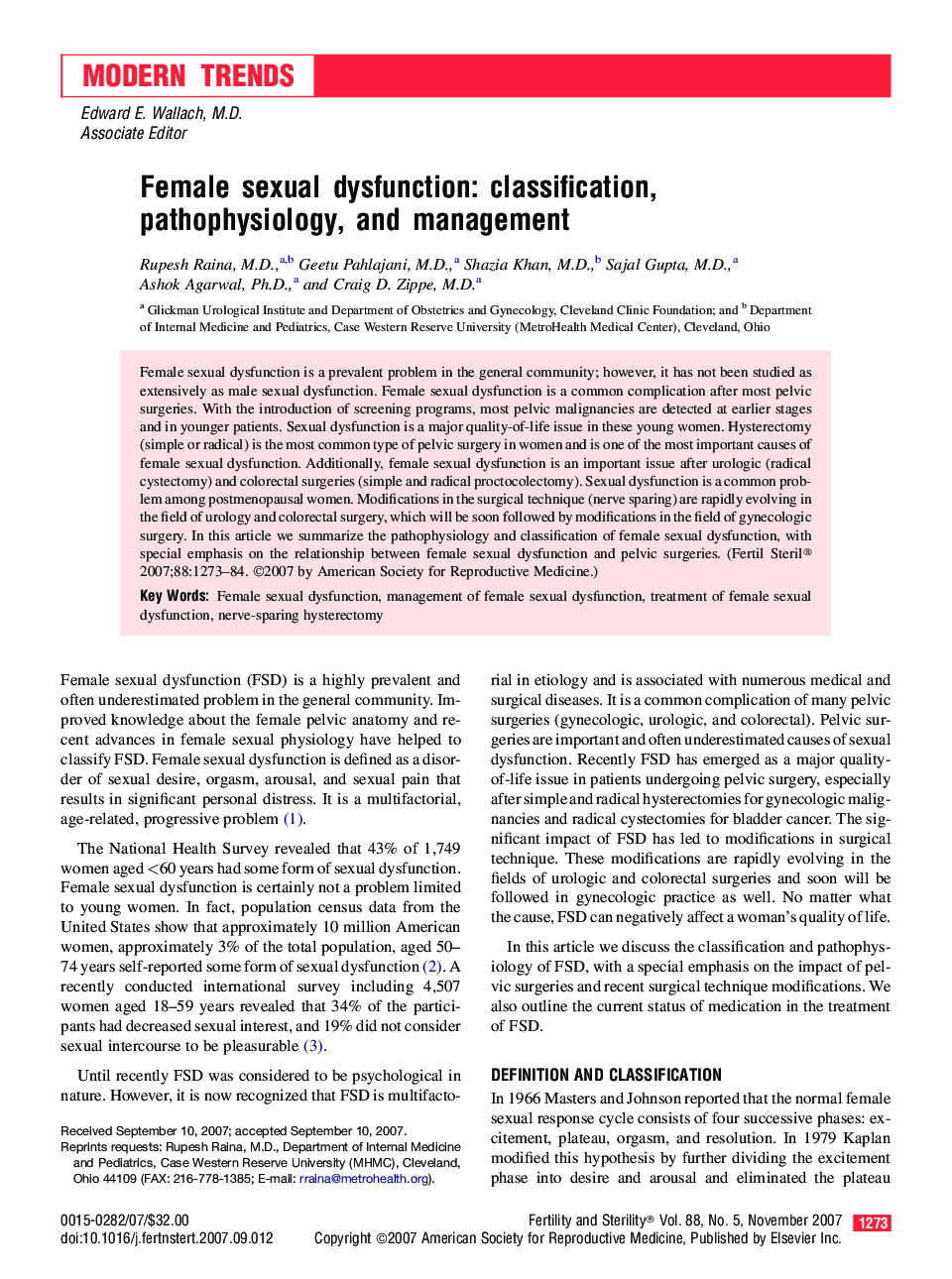| Article ID | Journal | Published Year | Pages | File Type |
|---|---|---|---|---|
| 3941933 | Fertility and Sterility | 2007 | 12 Pages |
Female sexual dysfunction is a prevalent problem in the general community; however, it has not been studied as extensively as male sexual dysfunction. Female sexual dysfunction is a common complication after most pelvic surgeries. With the introduction of screening programs, most pelvic malignancies are detected at earlier stages and in younger patients. Sexual dysfunction is a major quality-of-life issue in these young women. Hysterectomy (simple or radical) is the most common type of pelvic surgery in women and is one of the most important causes of female sexual dysfunction. Additionally, female sexual dysfunction is an important issue after urologic (radical cystectomy) and colorectal surgeries (simple and radical proctocolectomy). Sexual dysfunction is a common problem among postmenopausal women. Modifications in the surgical technique (nerve sparing) are rapidly evolving in the field of urology and colorectal surgery, which will be soon followed by modifications in the field of gynecologic surgery. In this article we summarize the pathophysiology and classification of female sexual dysfunction, with special emphasis on the relationship between female sexual dysfunction and pelvic surgeries.
